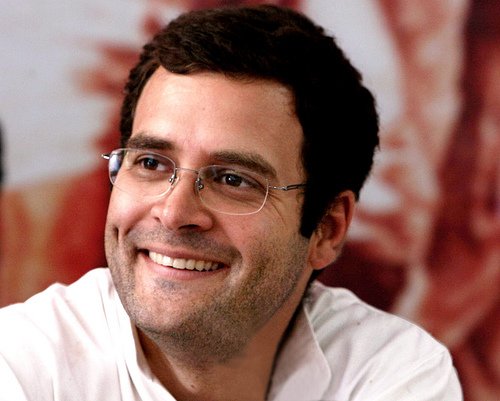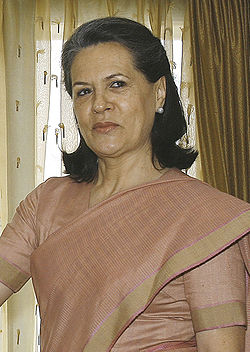 Rahul Gandhi 2.0 is angry-and this anger is making him take ‘potshots’ at the Narendra Modi government almost every other day. Okay, I know it is politics. And I know that he is not angry. And I know that he is trying to rediscover himself. And I know that he is trying to ensure that the party of his ancestors doesn’t become totally irrelevant in the days to come.
Rahul Gandhi 2.0 is angry-and this anger is making him take ‘potshots’ at the Narendra Modi government almost every other day. Okay, I know it is politics. And I know that he is not angry. And I know that he is trying to rediscover himself. And I know that he is trying to ensure that the party of his ancestors doesn’t become totally irrelevant in the days to come.
Rahul’s latest jibe at the Modi government came yesterday when he said in Punjab: “Does the farmer not make in India?…Your government did nothing when hailstorms destroyed their crop?”
This after he had told a farmers’ rally in New Delhi earlier this month that: “We[i.e. the Congress led UPA government] increased the MSP of wheat from Rs 540 to Rs 1400…The MSP has not changed, no benefit to farmers.”
These statements are in line with the dole based politics and economics practised by the Congress party over the years. The trouble is the country has had to pay a huge cost for this. Allow me to explain.
The MSP is the price at which the government buys rice and wheat from the farmers, through the Food Corporation of India (FCI) and other state government agencies. The MSP of rice was increased rapidly by the Congress led UPA government starting in 2007.
Between 2007 and 2014, the MSP of rice jumped up from Rs 580 per quintal to Rs 1310 per quintal, an increase of 12.34% per year. In case of wheat, the MSP started increasing from 2006 onwards. Between 2006 and 2014, the MSP of wheat jumped up from Rs 650 per quintal to Rs 1400 per quinta, an increase of around 10.1% per year.
The Table 1 shows the buffer stocks and the strategic reserves that the FCI needs to maintain at various points of time during the course of the year.
Table 1 |
|
Now look at Table 2 which shows the stocks that FCI maintained at various points of time in 2014. A comparison of both the tables clearly tells us that FCI is stocking significantly more rice and wheat than what it is required to do. Interestingly, after the Narendra Modi led NDA government came to power, FCI has been going slow on procurement. In the earlier years the FCI was stocking even more than what it currently is.
Table 2
As on | Rice | Wheat | Total (in lakh tonnes) |
Jan 1, 2014 | 146.98 | 280.47 | 427.45 |
April 1, 2014 | 202.78 | 178.34 | 381.12 |
July 1, 2014 | 212.36 | 398.01 | 610.37 |
Oct 1, 2014 | 154.22 | 322.63 | 476.85 |
Source: www.fciweb.nic.in
What the comparison of the two tables clearly tells us is that as the MSP prices have been increased, more and more rice and wheat have landed up with the government than what is required by it to run its various food programmes. In fact, the data clearly shows that before 2008 FCI bought as much rice and wheat as was required to maintain a buffer as well as a strategic reserve.
During and after 2008, the purchase of rice and wheat simply exploded. The reason for this is fairly straightforward. In the financial year 2008, the MSP of wheat was raised by 33.3%. In the financial year 2009, the MSP of rice was increased by 31.8%. And this led to farmers producing more rice and wheat in the years to come. This rice and wheat landed up with the government. FCI did not have enough space to store these grains and that explains why newspapers regularly carried pictures of rice and wheat rotting in the open, even though food inflation was rampant
The MSP policy run by the Congress led UPA government has now led to a situation where Indians farmers are producing more rice and wheat than what is required. In fact, influenced by this steady increase in the price of rice and wheat states like Punjab and Haryana, which have a water problem, are growing huge amount of rice and wheat. These crops are huge water guzzlers. Further, farmers are not growing enough of vegetables and fruits, where the prices have increased at a fast pace.
Also, when the government becomes dole oriented that leaves little money for it to do other things. At the end of the day there is only so much money that even a government has. As an editorial in The Financial Express points out: “This year, the government plans to spend around Rs 2.3 lakh crore on the food economy, including the food subsidy, and a very small fraction of this is for either crop insurance (imagine what that would do for farmers right now) or for creating irrigation facilities (imagine what that would do when the monsoon fails).”
Rahul Gandhi yesterday talked about the government not doing anything for the farmers after the hailstorms destroyed their crops. His government was in power for ten years what did they do on the crop insurance front? Why was the entire focus of the Congress led UPA government in making the farmer dependant on the government?
Interestingly, Rahul’s mother Sonia has written to the food minister Ram Vilas Paswan seeking a relaxation in the quality of wheat that the government buys from the farmers. As per the current regulations FCI does not buy wheat with a moisture content of greater than 14%. The Times of India reports Paswan as saying that: “permitting more moisture content beyond this level would mean the grain would be unfit for human consumption.” The newspaper also reports a food ministry official as saying: “There is no procurement of grains with more moisture content than the permitted limit. The procurement is being done as per the food safety standard law.”
This is a fair point. The government can’t be procuring wheat which is unfit for human consumption. Also, there is something majorly wrong in the state of the nation, where more than 65 years after independence, the main opposition leader suggests that the government buy wheat which is essentially not fit for human consumption.
This scenario would have never arisen if a crop insurance policy that covered a major section of the farmers had been in place. Who is to be blamed for this? Narendra Modi who came to power only 11 months back? Or the Congress party run by the Gandhi family which has been in power in each of the decades since independence? The answer is obvious.
The column originally appeared on The Daily Reckoning on Apr 30, 2015



